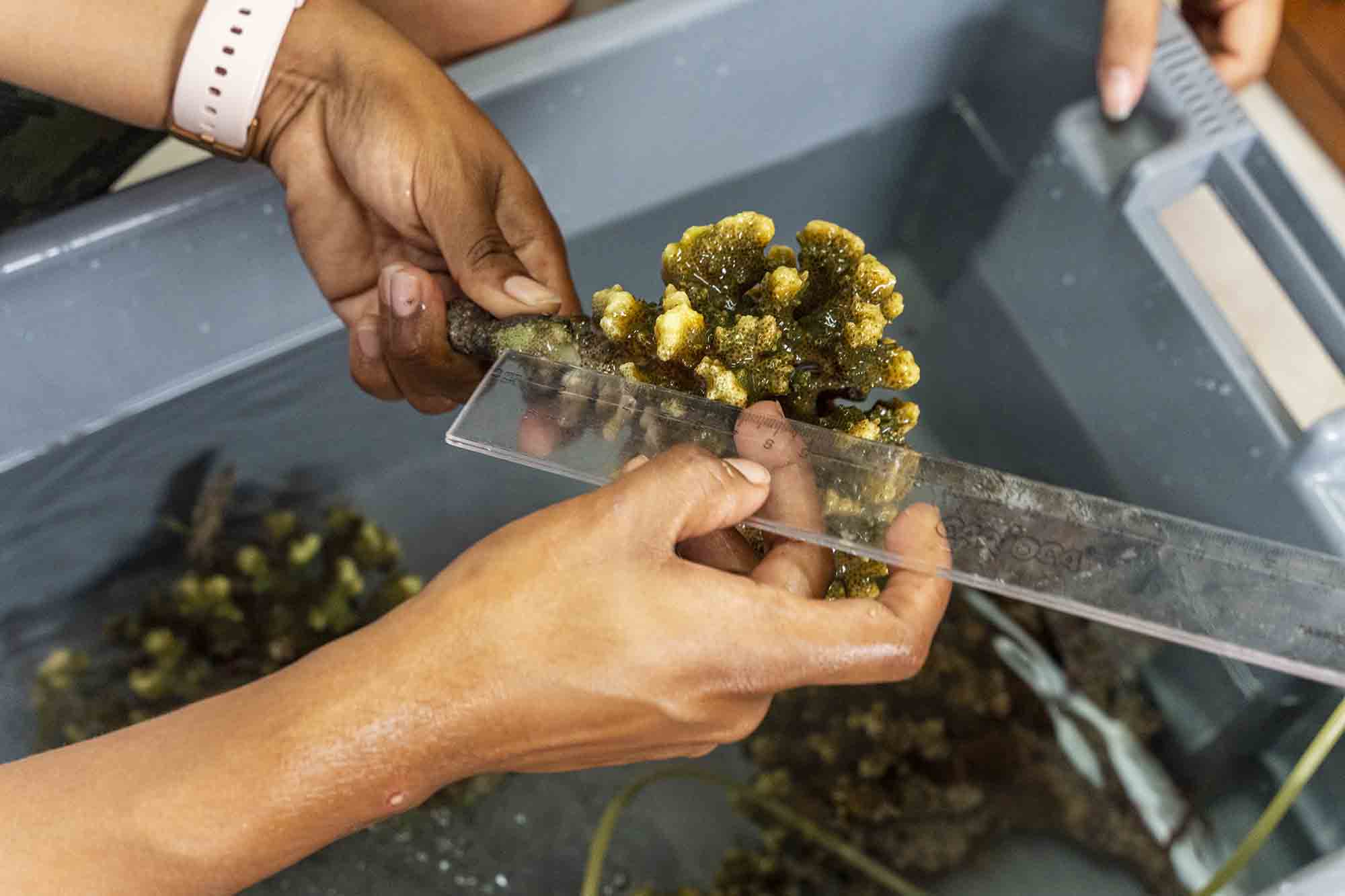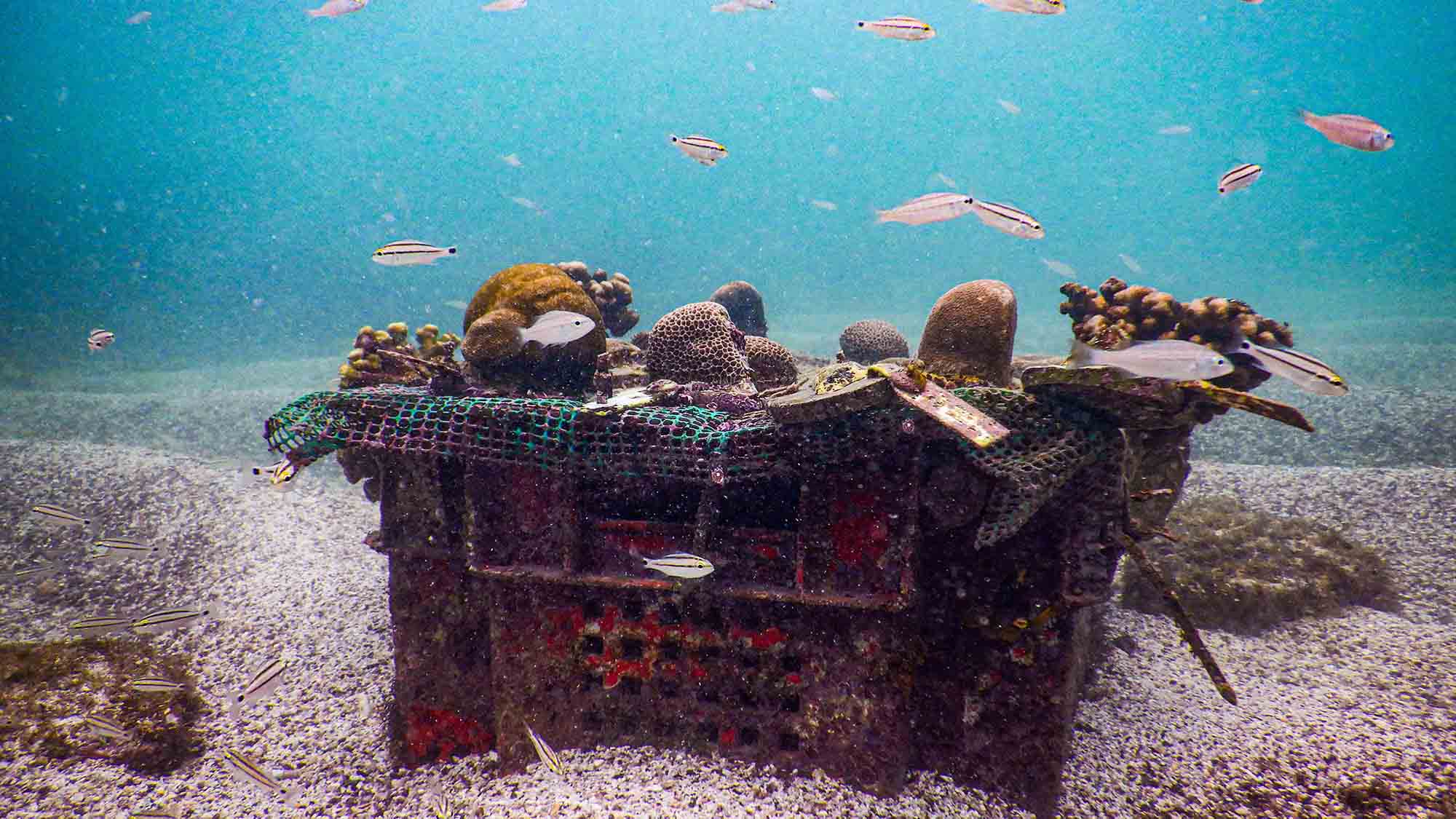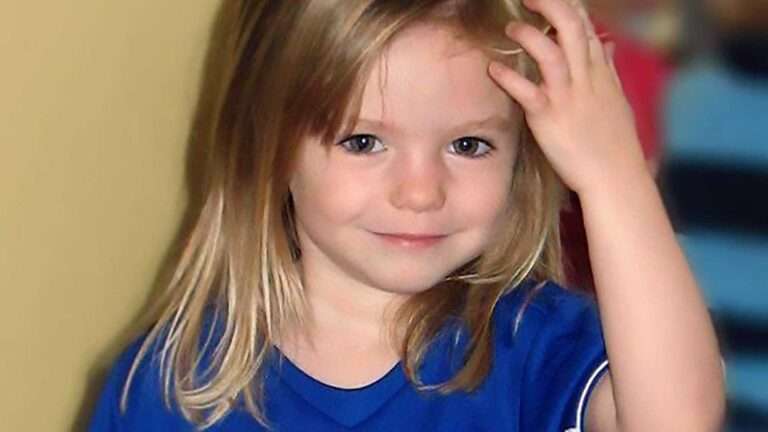Divers and conservationists show how they are creating an underwater ‘nursery’ to restore fragile marine life off the Galapagos islands.
The experimental project, which was designed to protect threatened coral reefs in the Galapagos Islands, was funded by the Galapagos Conservancy and implemented by the Ministry of the Environment, Water and Ecological Transition, according to local media reports from Wednesday, 21st September.
The reefs are threatened by rising sea temperatures and are fundamental to the protection of coastlines as they function as ‘shock absorbers’ for large waves during stormy weather.
Researchers tested out different methods that could potentially favour the growth of corals found in a nursery installed in the Bahia Academia of the archipelago’s second largest island, Santa Cruz, according to a statement Newsflash obtained from The Directorate of the Galapagos National Park.
Through the use of bricks, cement discs, low beds, high beds, and a string system researchers attempted to determine the most efficient method for encouraging coral growth since the implementation of the nursery by park rangers and volunteers in 2020, according to the statement.

Jenifer Suarez, the project’s leading park ranger, went on to say that the nursery has undergone “favourable changes” in the presence of the new corals.
She added: “This includes the appearance of new fish and invertebrates colonising the area.”
Conservationists expect that the nursery will help restore what is considered to be one of the most delicate ecosystems in the world, according to reports.
The statement added: “One of the results achieved is the planting of fourteen coral fragments on Punta Estrada Beach that remained in the nursery for a year, while DPNG technicians and volunteers constantly monitored the growth process.”
A system was also installed to measure variables including pH levels, salinity, temperature and dissolved oxygen.

(Parque Nacional Galapagos/Newsflash)
This is an essential part of understanding coral health, according to the Galapagos Directorate.
The director of the Galapagos National Park, Danny Rueda, stated the project, entitled the ‘Restoration of the Coral Zone in the Bahia Academia’ (Restauración de Zona de Corales en Bahía Academia) will prove beneficial for the both local industries and the islands’ fragile ecosystems.
He explained: “In the archipelago, the climatic events of El Niño almost brought the corals to the brink of extinction”.
The project now plans to increase the number of species fragments found in the nursery in order to place them in a restoration site once they have reached a certain size that will allow them to survive independently, according to the statement.

(Parque Nacional Galapagos/Newsflash)

(Parque Nacional Galapagos/Newsflash)
To find out more about the author, editor or agency that supplied this story – please click below.
Story By: Alice Amelia Thomas, Sub-Editor: Marija Stojkoska, Agency: Newsflash
The Ananova page is created by and dedicated to professional, independent freelance journalists. It is a place for us to showcase our work. When our news is sold to our media partners, we will include the link here.




